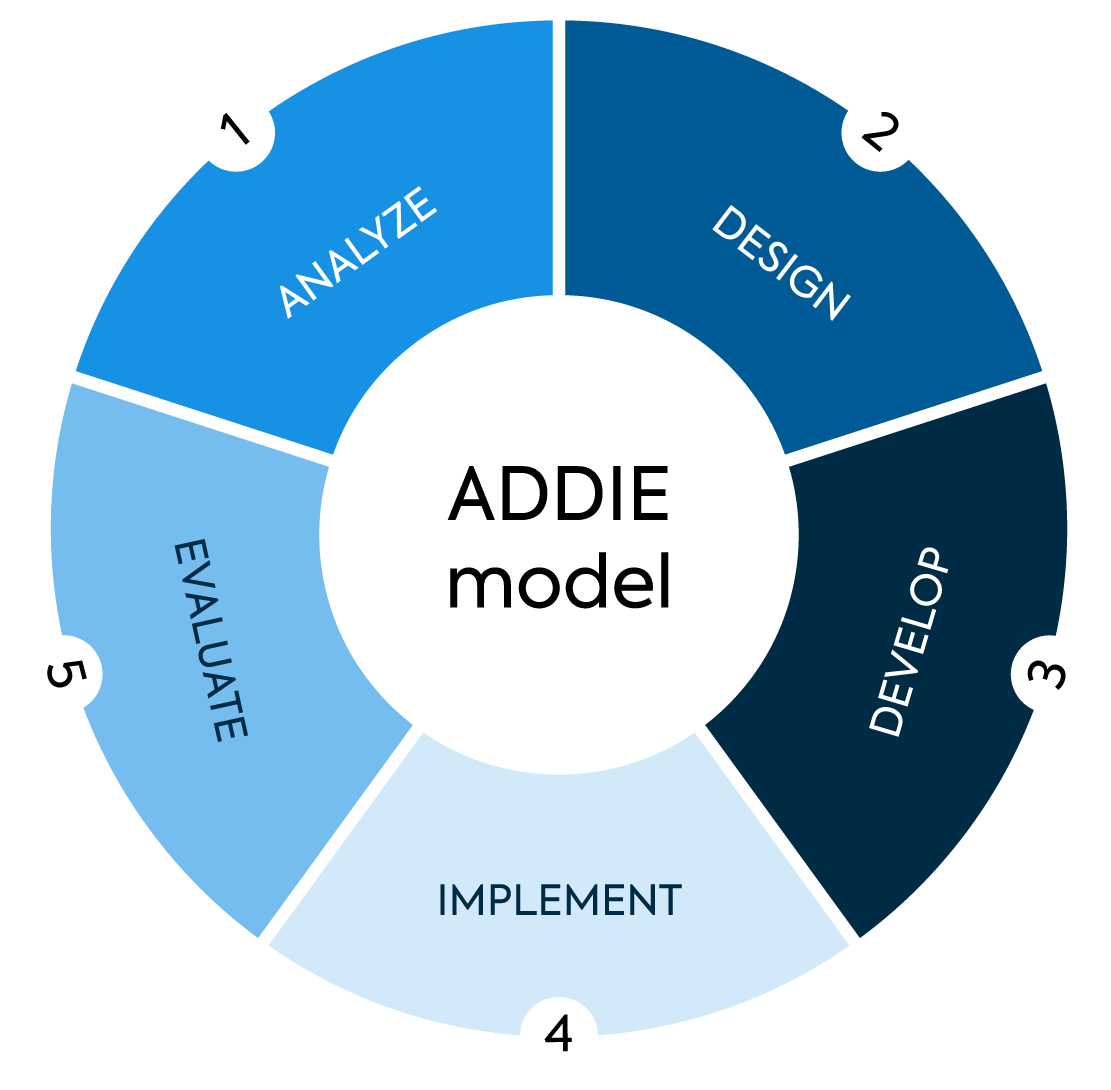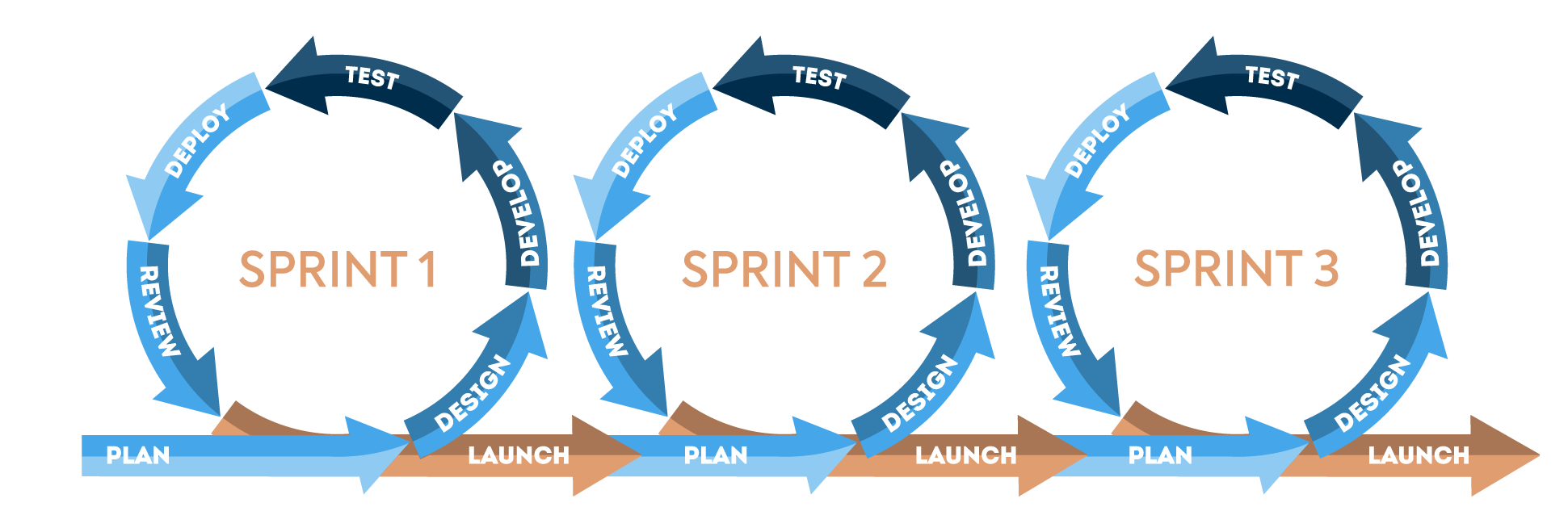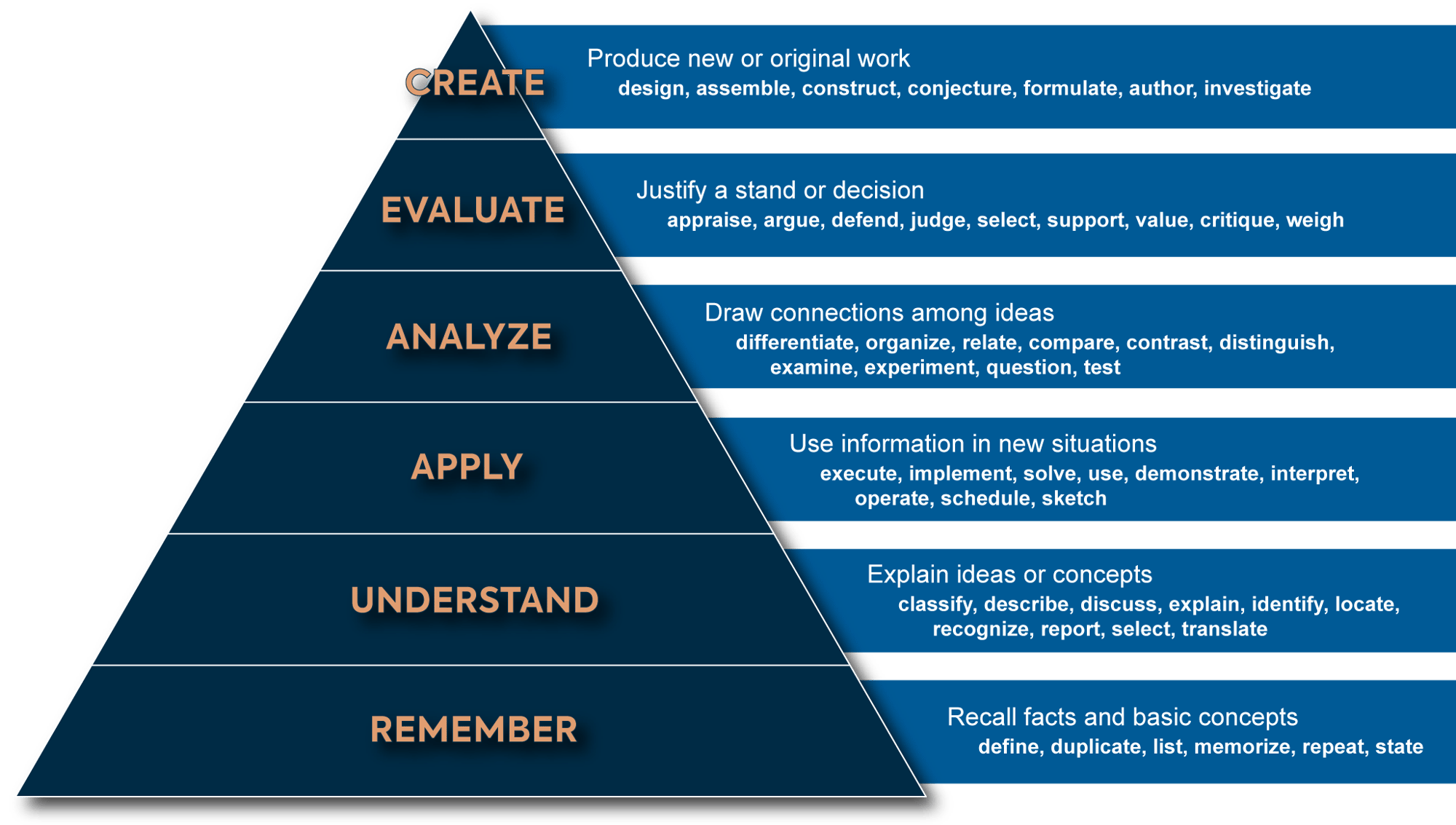KNOWLEDGE CENTER
Instructional Design Models
Instructional design models are tools, a framework to create content around. Design models are methodologies that dictate how a course is developed and each model has different uses. There are many instructional design models for teaching and creating content that are highly effective depending on if you’d like to to take a more scientific or more artful approach. ADDIE, AGILE, and Bloom’s Taxonomy are three of the most popular course design models that we will further explore in this article.
Are Instructional Design Models Useful?
A design model provides the bones of a project that a designer then builds upon to construct the final product. These design models allow designers to visualize and deconstruct a project so the design can be worked on in stages while ensuring the design stays true to the learning objective. Design models are also time and money-saving tools as they let a designer easily figure out how much content needs to be developed or if they already have the content. Knowing the framework of a project means designers won’t waste time developing content that won’t be used. A design model also lets designers spot possible gaps in content and fill those gaps before beginning development. Instructional design models for teaching require special attention as any flaws in the course design will ultimately impact the learner’s ability to complete a learning objective.
Different models of training design will result in different courses. A survey of instructional design models will reveal that each of the varying course design models creates a learning experience that specializes in some aspect of education. Online course design models must be keenly aware of the unique challenges of learning online while other learning design models are more suited to a traditional classroom setting. It is important to understand the learning design models before crafting courses as using the wrong model for your educational objective will result in poorly made content which affects the overall quality of the instruction.
Popular Instructional Design Models
There are multiple highly popular instructional design models. We will talk about three of the most prolific instructional design models in education: ADDIE, AGILE instructional design, and Bloom’s Taxonomy.

ADDIE Model
The ADDIE design model is a widely popular, linear, but flexible process. The name is an acronym that stands for analysis, design, development, implementation, and evaluation with each word representing a different phase of production. When following the ADDIE model, each step has a specific outcome that leads directly to the next step. The ADDIE model also relies on instructional theories such as behaviorism, constructivism, and cognitivism. Many current design models are spin-offs or variations of the ADDIE model.
AGILE Model
The AGILE design model is a relatively new model that originated as a technological theory for software development but grew to apply in different industries. AGILE stands for align, get set, iterate and implement, leverage, evaluate with each word standing for a stage of development. Collaboration, feedback, and iterative changes are all hallmarks of the AGILE model. AGILE teams work together to quickly change and improve products which results in a faster course development time without sacrificing quality.

Bloom’s Taxonomy
Bloom’s Taxonomy is one of the oldest and longest-lasting models of training design that is still used today. Within Blooms Taxonomy there are three domains of learning: cognitive (mental), affective (emotional), and psychomotor (physical), but the cognitive domain is the most well-known.
The cognitive domain is divided into six categories with each category representing a cognitive skill level. The names and order of these categories have changed over the years, but the base idea is unchanged. Each category has associated verbs and terms that describe what learners should be capable of at each skill level.
- Remembering: recognizing, recalling
- Understanding: interpreting, exemplifying, classifying, summarizing, inferring, comparing, explaining
- Applying: executing, implementing
- Analyzing: differentiating, organizing, attributing
- Evaluating: checking, critiquing
- Creating: generating, planning, producing

The affective domain focuses on skills dealing with how people react emotionally and the ability to exercise empathy. There are five levels within the affective domain with each level indicating a different ability to digest information.
- Receiving: student is passively paying attention
- Responding: student is actively participating in learning and reacts to new information
- Valuing: student associates a value to learned information
- Organizing: student can compile different values, information, and ideas therefore comparing, relating, and expanding on what they have learned
- Characterizing: student attempts to build abstract knowledge
The psychomotor domain is based around physical action. This domain describes a student’s ability to physically use a tool like an instrument. The creators of Bloom’s Taxonomy never established subcategories for the psychomotor domain, but seven currently accepted categories were added in 1972.
- Perception: the ability to use bodily senses, such as estimating where a ball will land, to guide motor activity
- Set: readiness to act while understanding current abilities and desiring to improve
- Guided Response: early stage of learning a complex skill where the student understands mastery will only come through practice
- Mechanism: physical responses have become habitual and movements can be performed with confidence though mastery has not been achieved
- Complex Overt Response: skillful and confident performance of complex movement without hesitation
- Adaptation: movements can be modified to fit special situations, pushing past what was taught and adapting lessons to solve a new type of problem
- Origination: creating new movement to fit a new situation. Student is so well-versed with the base movement they can expand upon it to create something new
In Conclusion
There are many different learning design models each with different strengths and specialties. ADDIE, AGILE, and Bloom’s Taxonomy are the most popular design models that can be used to great success. SkillSource Learning’s instructional design consulting services can help you discover a design model that will suit your project and ensure your design is brought to its fullest potential.


